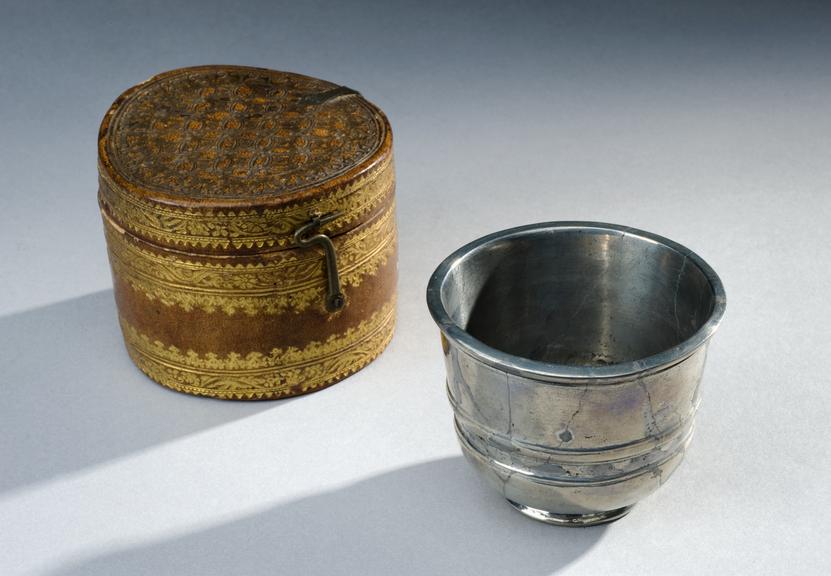


Antimony cup, with leather case, tooled with gold, 17th century
Cups made from antimony, a toxic, metallic element, became popular in the 1600s as a way to induce sweating and vomiting and so purge the body of excess humours that were believed to cause illness and disease. Wine was allowed to stand in the cup for 24 hours, by which time a small amount of the metal had dissolved.
It has been suggested that the cups were introduced in order to get around the law at a time when the sale and use of antimony preparations was strictly forbidden. Three tablespoons of antimony could cause the desired effects, but it would have been a distinctly unpleasant experience.
Details
- Category:
- Pharmacy-ware
- Collection:
- Sir Henry Wellcome's Museum Collection
- Object Number:
- A134134
- Measurements:
-
overall: 60 mm 80 mm, .24kg
cup: 55 mm 68 mm, .18kg
- type:
- antimony cup
- credit:
- De Navarro, A.




